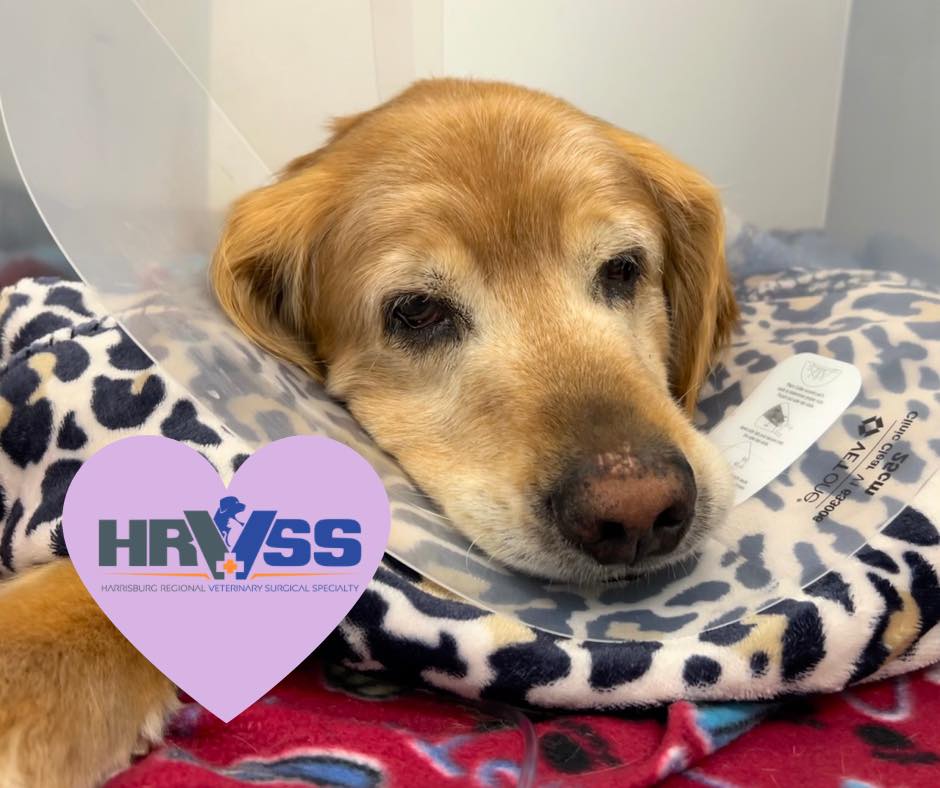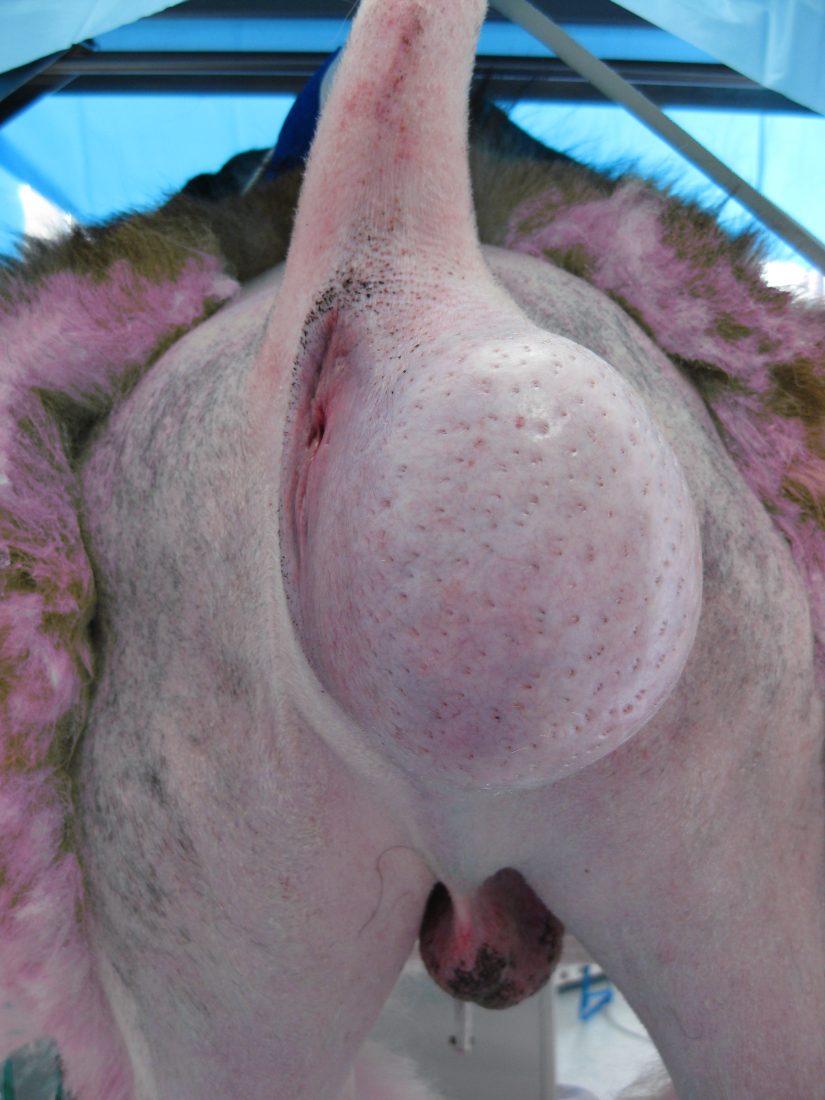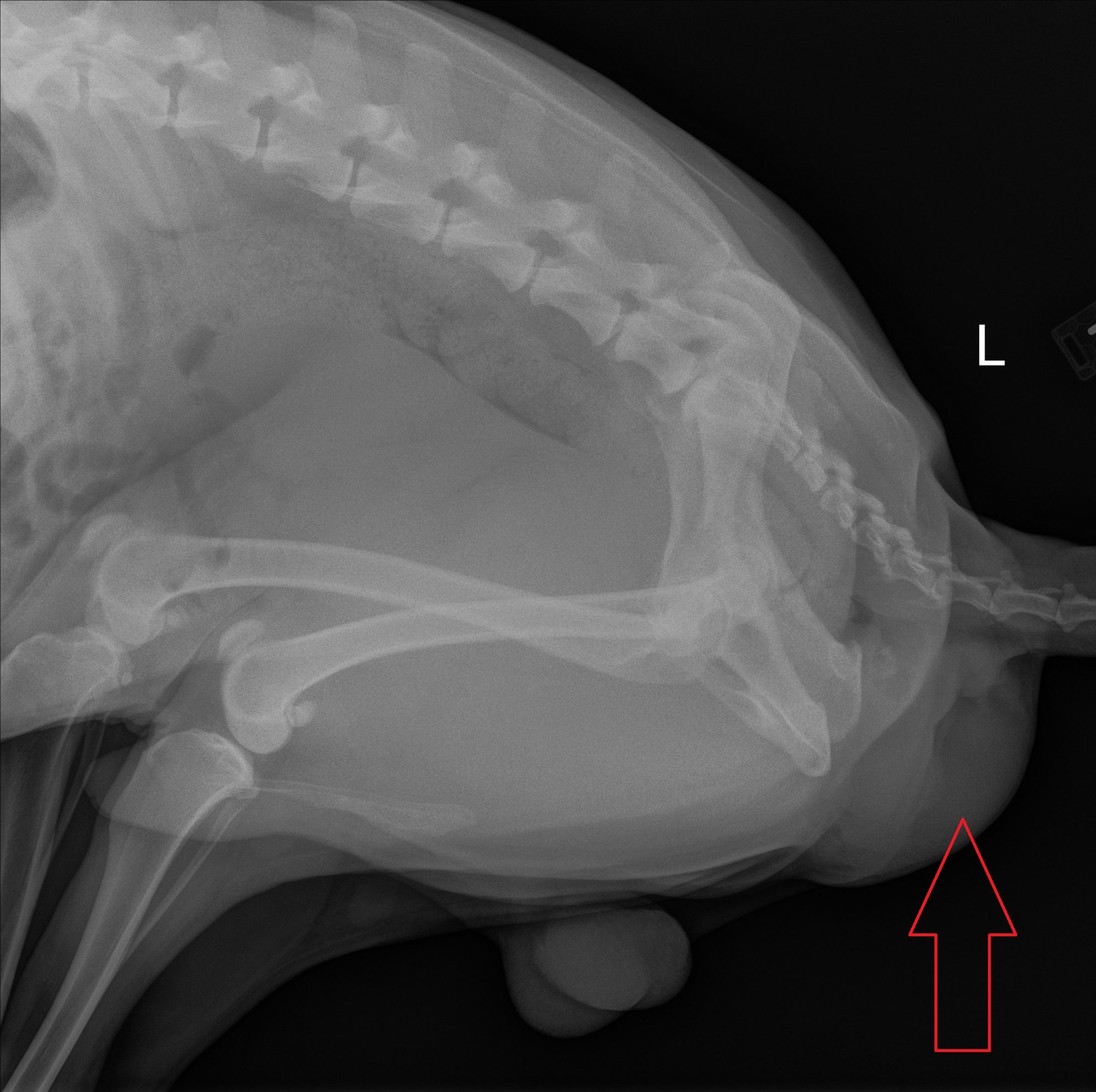Dr. Phil Zeltzman’s Blog
Jake, my biggest surgical & ethical challenge in 2022

Jake, an 11 year old Golden, had a long list of issues…
- A mass in his left anal sac, which was likely cancerous.
- A right-sided perineal hernia, because he was not neutered.
- An enlarged prostate, because he was not neutered.
He needed 4 separate surgeries to solve these issues:
- Removal of the anal sac mass.
- Repair of the perineal hernia.
- Abdominal surgery to deal with the prostate.
- A neuter.
That’s a lot for one older dog, and a long anesthesia.
That begged a critical question: was it safer to do everything under one anesthesia (and take a risk) or separate different surgeries under 2 separate anesthesia episodes (and take a risk)?
In other words, one very long anesthesia (possibly 2-3 hours) could be risky in an older dog. He could have a much longer recovery. Now, I’d be the first one to tell you that anesthesia is incredibly safe these days, but it makes sense that a longer anesthesia is riskier than a short anesthesia.
So the next question was: would 2 shorter anesthesia episodes, a few weeks apart, be safer?
And if we decided to separate the surgeries in 2 sessions, what should we do first and second?
I agonized over what to do.
I consulted with surgeon colleagues to brainstorm about the wisest approach.
It was a huge ethical & medical dilemma.
In the end, I decided not to gamble and perform 2 separate surgeries.
I had a long heart-to-heart with Jake’s owner. She understood the reasoning and was ready to get started.
Anesthesia 1:
We decided to perform everything on the “back end” during the first anesthesia.
- Right perineal hernia repair: a perineal hernia is a bizarre condition, most commonly found in non-castrated male dogs. The muscles that keep organs inside the belly become weaker. This can allow organs to slip through the pelvis and end up under the skin, on either side (or both) or the anus.
Below is a picture of the back end of another dog, Tommy, with a huge bulge on the right side of the anus. It contained the prostate & the bladder.
In other patients, the hernia can even contain intestines.

You can see Jake’s hernia in the X-ray below. The bulge in his back end is the hernia. In Jake’s case, it contained fat and a lot of fluid.

- Left anal sac mass: then we dealt with the tumor. It was tiny (2 mm, or less of a tenth of an inch), but most of the time, such masses are cancerous and aggressive. This was one of the reasons to perform the “back end” surgeries first: to get rid of presumed cancer ASAP. Sure enough, the biopsy came back as the classic cancer in an anal sac (adenocarcinoma). It was small enough that we got it all.
Jake has his family vet to thank for that. Not only did she find the tiny mass by doing a thorough exam (including a rectal exam), but she recommended surgery rather than procrastinating.
- Neuter: Then Jake was neutered. I also recommended removing his scrotum (the “sac”), for shall we say… cosmetic reasons…
Jake did great through anesthesia, and went home to recover over the following month.
Anesthesia 2:
One month later, Jake was back to normal and we performed the belly surgery to deal with the very large prostate found on ultrasound.
The prostate cannot be removed safely. We drained it by using a natural “drain” that lives in the belly, called the omentum. This thin membrane that floats in the belly is very rich in lymphatic vessels, and can drain pus and fluid from the prostate. This is called “omentalization.”
We also took biopsies of the prostate. The biopsy revealed that Jake’s condition was “benign prostatic hyperplasia,” along with multiple cysts. It can cause difficulty peeing, which is also the classic condition in older gentlemen…
In dogs, castration is the treatment of choice. The lack of testosterone causes the prostate to shrink over a few weeks.
This time again, Jake did great through anesthesia, and went home to recover over the following month.
Over 7 months after his first surgery, Jake is still doing great!
His owner was happy with the sequence of events, and with the end result: a happy, healthy, tail-wagging Golden!
If you would like to learn how we can help your pet with safe surgery and anesthesia, please contact us through www.DrPhilZeltzman.com
Never miss a blog by subscribing here: www.DrPhilZeltzman.com/blog
Phil Zeltzman, DVM, DACVS, CVJ, Fear Free Certified

Dr. Phil Zeltzman is a traveling veterinary surgeon in Pennsylvania & New Jersey. An award-winning author, he loves to share his adventures in practice along with information about vet medicine and surgery that can really help your pets. Dr. Zeltzman specializes in orthopedic, neurologic, cancer, and soft tissue surgeries for dogs, cats, and small exotics. By working with local family vets, he offers the best surgical care, safest anesthesia, and utmost pain management to all his patients. Sign up to get an email when he updates his blog, and follow him on Facebook, too!

